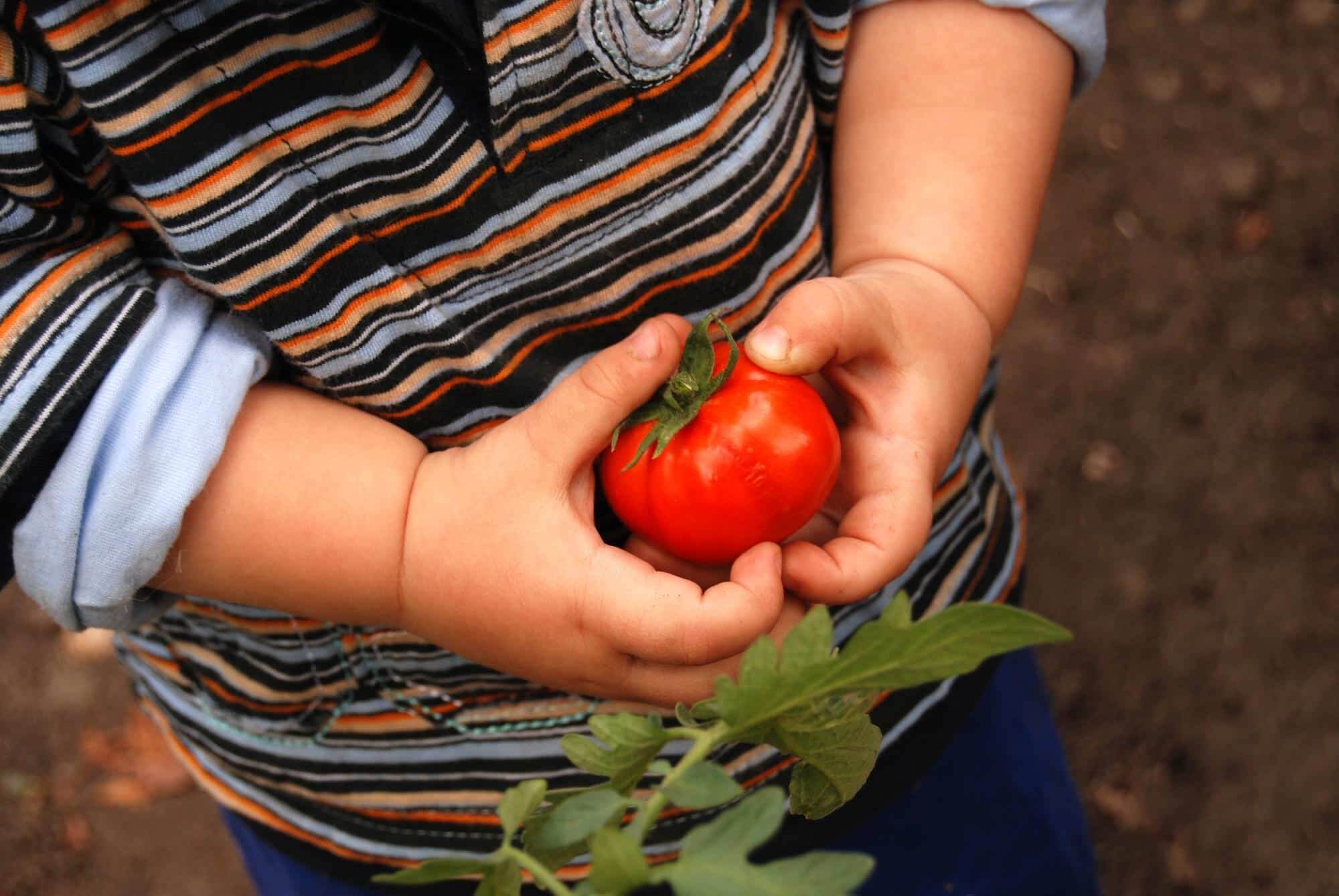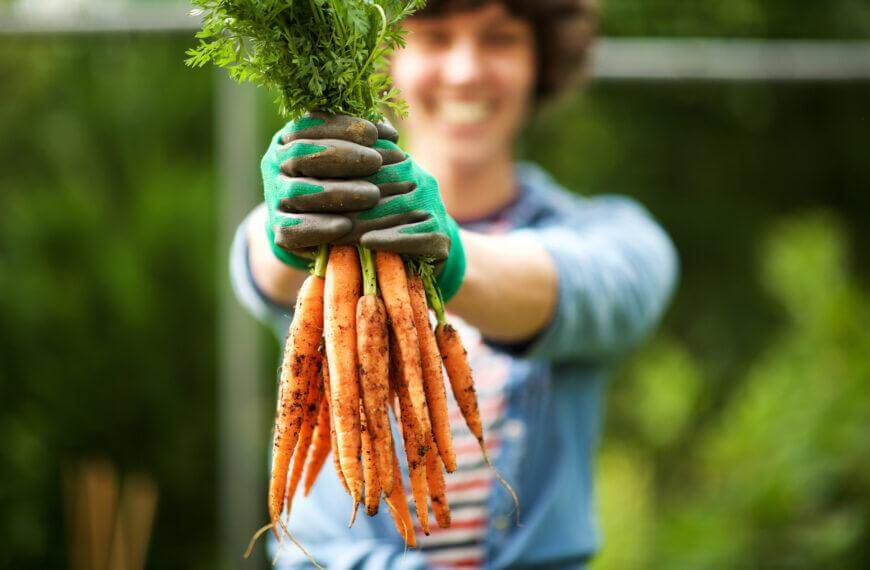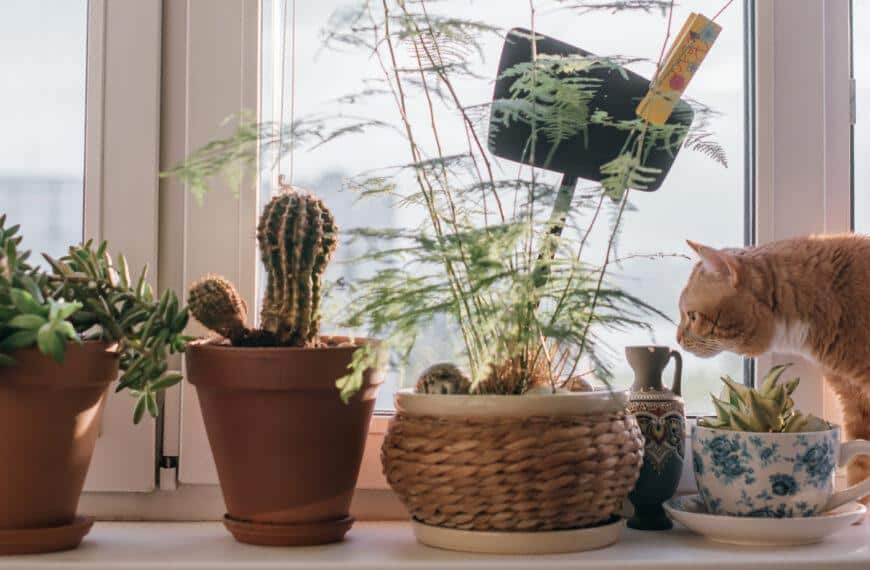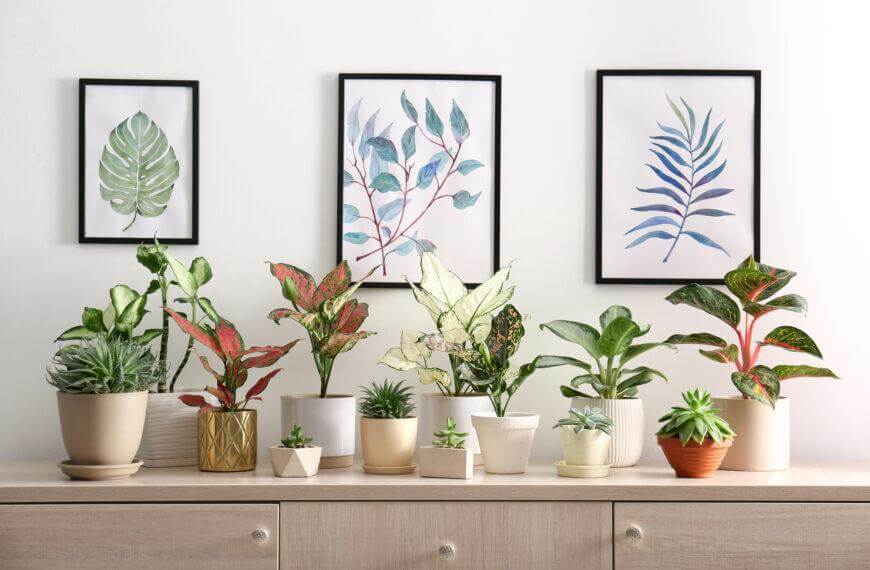Introduction to Fun Indoor Gardening Projects for Kids
Indoor gardening is an exciting and interactive way for kids to interact with nature. Here are three fun indoor gardening activities kids can enjoy!
- 1. Kids can learn about plants and their life cycles through these projects.
- 2. Not only are these activities educational, but they can also be entertaining, promoting creativity.
- 3. It’s an opportunity for kids to bond with family and friends while caring for shared plant-life together.
In addition to these benefits, indoor gardening can help kids develop responsibility and patience. It’s been found that being around plants has positive effects on mental health and cognitive function. (Source: NCBI). Plus, kids learn about the circle of life as they experience the death of their poor little herbs.
Benefits of Indoor Gardening for Kids
Indoor gardening is a great activity for kids! They can learn about sustainability, responsibility, and the environment. Plus, it helps them build fine motor skills, patience, and self-confidence. It also offers many other benefits, such as:
- Improved cognitive function
- Increased physical activity
- Promoting healthy eating
- Fostering creativity and imagination
- Teaching responsibility and time management skills.
- Reducing stress and anxiety levels.
Plus, it’s a great way to bond with family members or friends. Watching seeds grow or harvesting vegetables together can create unforgettable memories. Did you know that some indoor plants even have air-purifying properties? So, let’s get ready to have some fun with these indoor gardening projects!
List of Fun Indoor Gardening Projects for Kids
To engage your kids in a fun and educational activity, you can explore exciting indoor gardening projects for them. With this section ‘List of Fun Indoor Gardening Projects for Kids’, you can provide your kids with a great hands-on learning and playing experience. And, to make it more specific, this section includes 10 sub-sections such as ‘Create a Miniature Garden’, ‘Grow Your Own Herbs’, ‘Create a Terrarium’, ‘Build a Trellis’, ‘Make a Succulent Garden’, ‘DIY Vertical Garden’, ‘Design a Fairy Garden’, ‘Planting Seeds in Eggshells’, ‘Decorate a Flower Pot’, and ‘Create a Worm Composting Bin’.
Create a Miniature Garden
Kids who want some indoor gardening fun can craft their own miniature garden. It’s an educational way to learn about planting and caring for plants. Here’s how:
- Get a tiny pot or container.
- Fill it with soil.
- Pick plants that like indoor environments.
- Gently place them in the soil.
- Give them a good watering, but don’t overdo it.
- Add decorations like rocks, pebbles, mini furniture, or figurines.
When picking plants, go for succulents or cacti – they need less water and you can find them at most nurseries. Plus, kids can make their creation extra special with seashells, gnome statues, and other adornments. Who knows, they might even boost their mental health!
Grow Your Own Herbs
Want to cultivate a green thumb in your child? Introducing them to herb gardening could be a great way to start! Herbs are easy to maintain indoors, perfect for kids with short attention spans. Here’s a simple guide for them to grow their own herbs at home:
- Pick the right pot. It should be shallow and broad enough for the herbs. It should have drainage holes at the bottom.
- Fill it up with soil. Use nutrient-rich soil that will help the herbs thrive. Make sure it is loosely packed.
- Plant the herbs. Gently sow the seeds in the soil, covering with a thin layer of soil mix where applicable. Water until moist. Place in a sunny spot or under artificial lighting.
Herb gardening has a long history. Ancient cultures such as Greek, Egyptian, Indian, and Chinese used herbs for natural medicine. In countries like China, India, Korea, and Japan, herb cultivation became an art form through bonsai gardening. Help your kids make their own miniature jungle with a terrarium project!
Create a Terrarium
Terrarium Making for Kids: A Guide
Introduce your kids to indoor gardening with terrarium making! They can create miniature gardens in jars, fish tanks, or bottles. Here’s how:
- Step 1: Place small rocks at the bottom of the container for drainage.
- Step 2: Cover the rocks with activated charcoal or sphagnum moss. This will keep the soil fresh.
- Step 3: Add a few inches of potting soil on top.
- Step 4: Decorate with plants, stones, and figurines.
Your Terrarium Is Ready! Spritz it with water every few days and put it near a window for some sunlight.
Terrace Farming for Kids
Urban farming is fun for the whole family with terrace farming! Grow herbs or cherry tomatoes in planters. Teach your kids how to build a ‘vegetable skyscraper’ – a trellis – and enjoy!
Build a Trellis
Creating a Plant Support – Constructing a plant support is important for indoor gardening. It gives plants the stability and strength they need. Here are six steps to make your own plant support:
- Cut a lightweight bamboo fence to the shape you desire.
- Select a spot that is level and stable.
- Plant your climbing plants at the base of the fence.
- Tie each stem until they reach the desired height.
- To make it sturdy, anchor it with hooks or stakes designed for outdoor use.
- Watch as your vines climb up and through your trellis.
For eco-friendly practices, try making supports out of used chopsticks and create vine frames. Even kids can’t kill succulents. The University of California reports that sprouts can grow leaves in just 25 minutes. So, this project helps build their confidence in their green thumb abilities.
Make a Succulent Garden
Succulents are simple to grow and come in amazing shapes and colors. An exciting succulent garden can be great fun for kids to make. Here’s a 4-step guide:
- Choose a container with drainage holes.
- Mix up the soil – perlite, sand and cactus soil is ideal.
- Arrange the succulents how you want. Give them enough room to grow.
- Water them with care – too much water is bad!
For extra fun, decorate with small figures or painted stones.
Pro Tip: Succulents love sunlight, so put your new garden in a sunny window for best results.
Vertical gardens can reach the ceiling and still leave space for dancing!
DIY Vertical Garden
Vertical Gardening is a creative way to cultivate plants. It saves space, looks attractive and improves your indoor air quality. Here’s how to make your very own Vertical Garden:
- Pick a Structure – Select a vertical structure that can hold planters or pots of different sizes. Options include pallets, ladders, PVC pipes, or wooden frames.
- Plant Selection – Choose plants that thrive in a vertical garden. Small herbs, flowers and lightweight veggies, such as cherry tomatoes, bell peppers and strawberries, work great.
- Planting – Fill your planters with organic potting mix and compost. Place the plants according to their needs, hang or fix them securely, and water them often.
For extra beauty, paint the frame of your structure with vivid colors or add some stylish accessories like fairy lights. Start now and enjoy the fun of gardening indoors with your own DIY Vertical Garden!
Design a Fairy Garden
Design a Charming Fairy Garden Indoors!
Engage your kids in gardening with this unique project. Let them connect with nature and understand the importance of plants.
- Pick a pot or container for the base.
- Fill it with soil, rocks, pebbles, and other decorations.
- Plant miniature ferns, mosses, and flowers around the base.
- Add some fairy-themed accessories like houses and figurines.
Exciting Details:
Let your kids give their fairies a character and invent stories. Mini lights that turn on automatically after dark will make the garden even more magical.
Get Started Now:
Gather materials and start designing an indoor fairy garden with your little ones. Enjoy quality time with them as they unleash their creativity!
Planting Seeds in Eggshells
Eggshell Planting: A Fun Gardening Project for Kids!
Teach kids about gardening by planting seeds in eggshells. Here’s how:
- Carefully crack open an egg. Preserve the shell and rinse it.
- Make a small hole in the bottom of the shell. Put soil inside, and put the seed on top.
- Gently water the soil, but don’t overwater. This could cause mold.
- Put the eggshells in an egg carton near sunlight. Check it often. When the plants have grown tall enough, transplant them into a bigger container or garden bed.
Eggshell planting is a great learning opportunity too! Kids can learn about different parts of plants, how they grow, photosynthesis, and light needs. Talk about how organic waste like eggshells can be reused instead of thrown away.
Did you know eggs are a great source of calcium for soil? Buried under soil, they act as fertilizers and a lime substitute for plants. (Source) For a personal touch, let your kids put their handprints on flower pots. This is a great way to remember which pot is theirs and which plants they killed!
Decorate a Flower Pot
Personalize a Flower Pot with Fun Designs! Transform boring flower pots into personalized pieces of art. Decorating a flower pot is a great indoor gardening project for kids to express their creativity. Here’s how:
- Choose a safe, non-toxic pot paint.
- Clean and dry the pots.
- Using brushes, sponges, or fingers, start painting! Kids can let their imaginations run wild – create patterns, write names or quotes, or use stamps.
- Paint the base color first, then add details.
- Let each coat dry before adding another layer.
- Spray a protective coating over it if needed.
Want more fun? Place attractive indoor plants like cacti and succulents inside the pot! Kids learn value addition and how to modify ordinary objects into unique artworks. Use natural elements like leaves or feathers as inspiration for prints. Or add small decorations like tiny animals or beads. This hands-on gardening project creates memories and an eye-catching flower pot while developing patience, creativity and artistry. Teach kids to compost with worms too – nothing says fun like wriggly, slimy critters in the living room!
Create a Worm Composting Bin
Create a nature-friendly soil for your indoor plants with a Worm Composting System! Here’s how:
- Choose a container with a lid, suitable size and small holes at the bottom.
- Add bedding material like newspaper strips, brown leaves or shredded cardboard.
- Place composting worms – such as red wigglers – in the container.
- Cover organic food scraps with a damp material like paper towel.
- Cover the fresh food scraps with a sheet of wet newspaper or jute sacking.
- Repeat alternating layers of food waste and protection. Avoid meat and oily foods.
Voila! Your low-odor compost bin will provide nutrient-rich fertilizer to your indoor plants. Plus, you contribute to reducing greenhouse gas emissions, and you teach kids about eco-friendliness and sustainable living practices! Start composting now to turn your living room into a mini jungle!
Materials and Tools Required for Indoor Gardening Projects
To get kids into indoor gardening, you need a range of materials and tools. Here are some items you will need:
- Potting soil, vermiculite, and perlite
- Seeds or starter plants
- Pots, trays, hanging baskets, and recycled containers like egg cartons and milk jugs
- Watering cans, hand trowels or cultivators for digging and weeding
- Nutrient-rich fertilizers for plant growth.
Choose items that are safe for kids. Rainwater harvesting is a great way to get natural water without electricity or plumbing. It’s an opportunity to teach kids about the environment. Help kids understand the benefits of growing their own food, and give them problem-solving skills through hands-on learning. Indoor gardening is a fun way to help kids learn responsibility – without the fear of a pet dying from neglect!
Tips to Get Kids Involved in Indoor Gardening
Indoor gardening has many benefits for children. They can learn physical skills, healthy food choices, and even how to nurture something living! Here are some strategies to keep kids excited about this fun activity.
- Create a project! Kids can craft their own plant markers or make miniature fairy gardens. This encourages creativity and helps them understand plant growth.
- Choose interesting plants! Pick plants that produce unique flowers or fruits. Dramatic foliage, herbs, and hardy succulents are all great options.
- Involve them in the process. Give them responsibilities like checking watering schedules, pruning, and pest control. This makes them feel valued and responsible.
Teach kids how to grow seedlings from kitchen scraps like avocado pits or carrot tops. This shows them the cycle of life firsthand. Create an herb garden with specific purposes such as cooking or making tea. This encourages eco-friendly habits like recycling and composting.
Indoor gardening is a fun way for kids to learn about nature! Get their green thumbs ready for awesome projects!
Conclusion: Easy and Fun Indoor Gardening Projects to Inspire Hands-On Learning and Play for Kids.
Indoor gardening can be a great way to pique kids’ interest, and is a fun way to learn! Here are some easy, exciting projects that can help kids explore and have a blast:
- Grow plants from kitchen scraps! Kids can learn about waste reduction, plant propagation, and plant structures.
- Create a mini garden with succulents or cacti! Kids will learn about ecology, plant needs, and design principles.
- Start an herb garden! Kids can learn about different herbs’ medicinal and culinary uses, and practice taking care of them.
- Make seed bombs or biodegradable planters! Kids can practice guerrilla gardening and learn about seed planting techniques by planting them outside.
- Build terrariums! Kids can learn about the different habitats required for different kinds of plants.
Kids can also observe changes in their plants over time, and build skills like measuring, estimating, and watering. Plus, these activities could help bring parents/teachers or older siblings together with younger ones. Gardening journals and observations can encourage learning too. Gardening is great for developing creativity, responsibility, patience, and perseverance – skills that are beneficial in life!
Frequently Asked Questions
1. What are some good indoor gardening projects for kids?
There are many great indoor gardening projects for kids, such as growing herbs, planting a salad garden, or creating a terrarium.
2. What materials do I need for indoor gardening projects for kids?
You can use simple materials like soil, seeds, small pots or containers, and water. You can also use recycled items like soda bottles, milk jugs, or egg cartons.
3. How can indoor gardening projects benefit my kids?
Indoor gardening projects can teach kids about plant life cycles, responsibility, and patience. It can also encourage healthy eating habits when they grow and harvest their own fruits and vegetables.
4. What are some tips for successful indoor gardening projects for kids?
Start with easy-to-grow plants, involve your kids in every step of the process, keep the plants in a well-lit area, and don’t overwater or underwater the plants.
5. How can indoor gardening projects be made more fun for kids?
You can make indoor gardening projects more fun for kids by incorporating art projects, songs, stories, or creating a “garden journal” to document and observe the growth of the plants.
6. Do I need any special skills to do indoor gardening projects with my kids?
No, you do not need any special skills to do indoor gardening projects with your kids. It is a fun and easy way to learn and play together.




